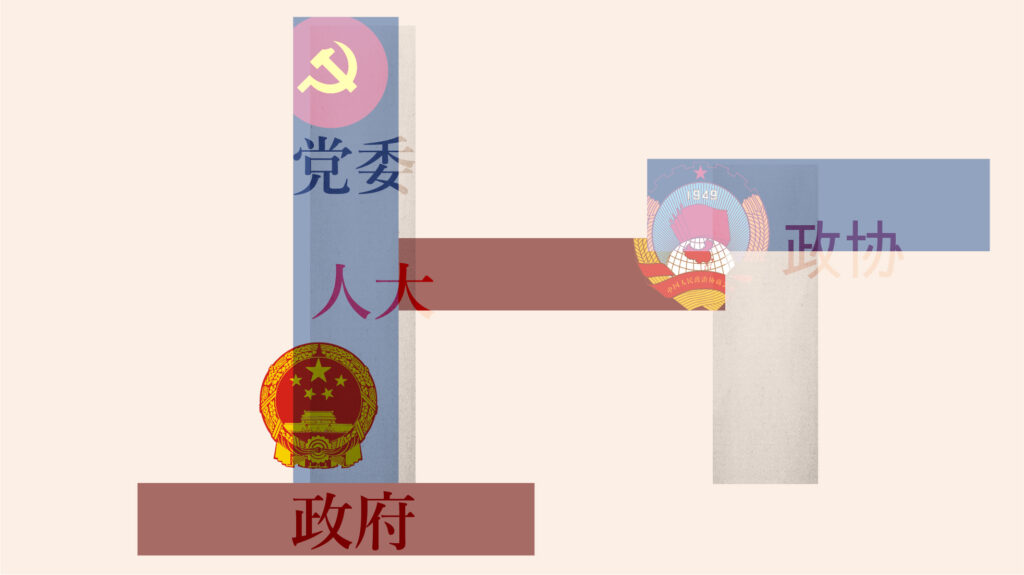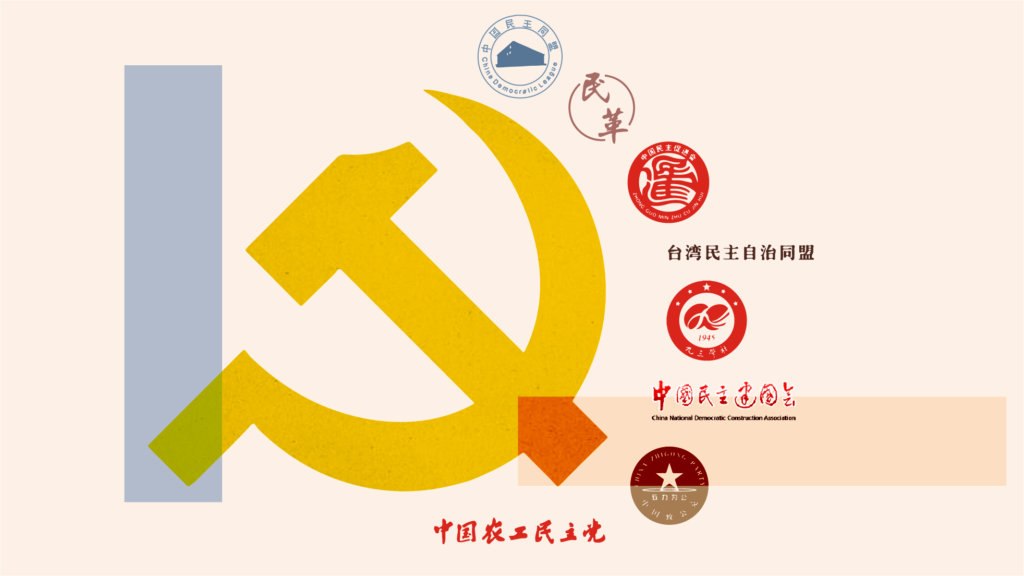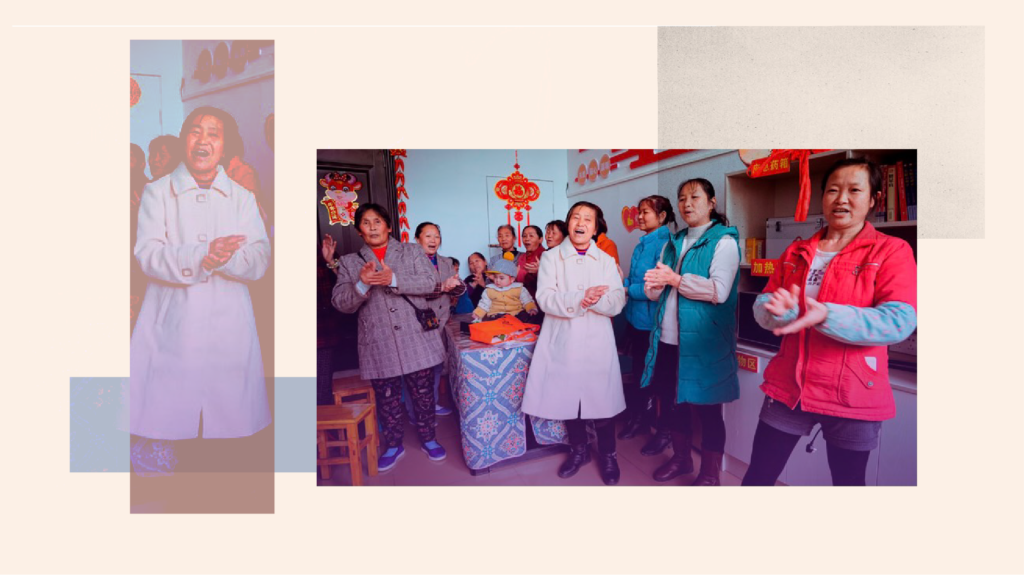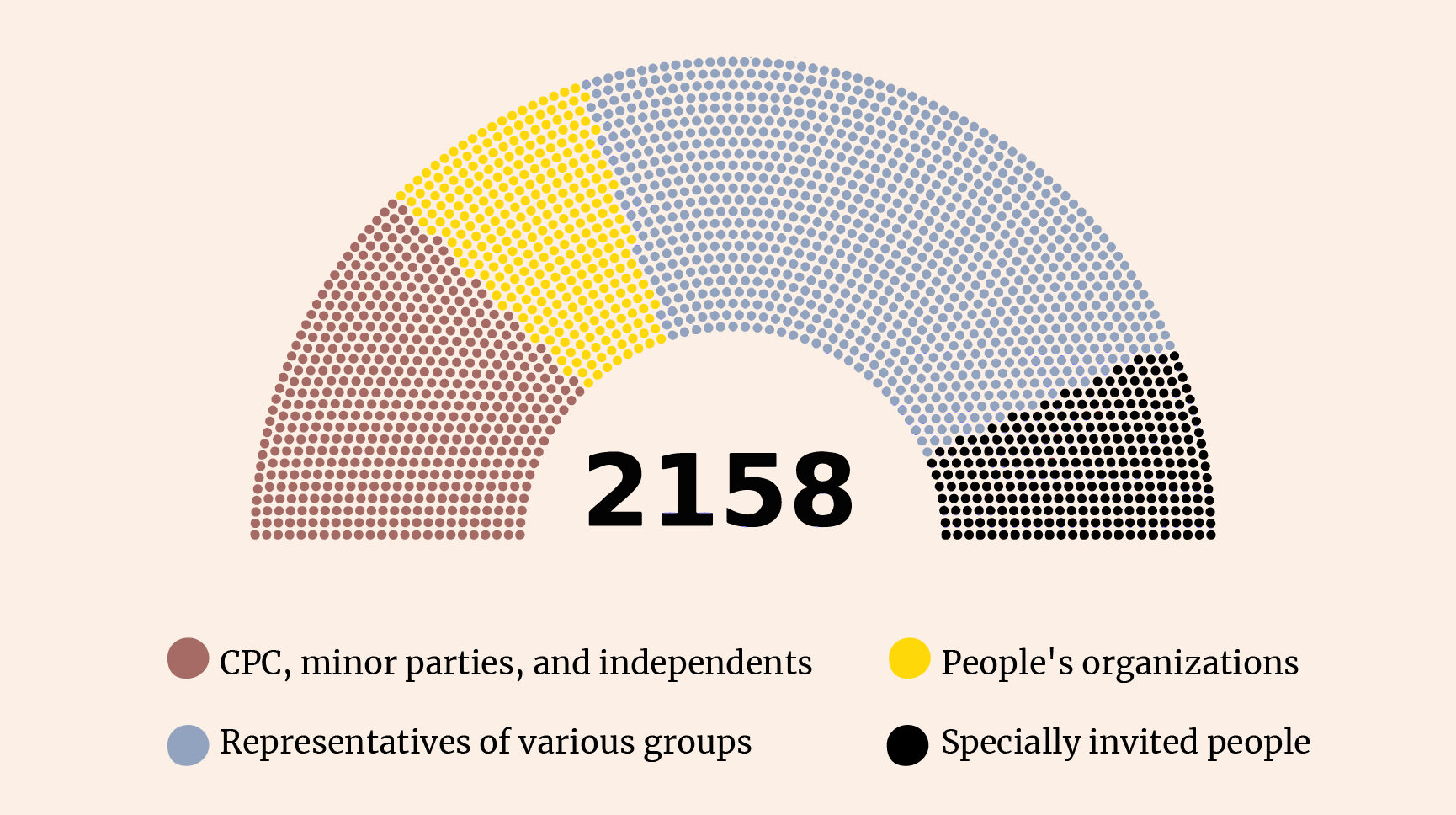Dongsheng Explains No.1
The Two Sessions (Lianghui)
Dear reader,
After more than a year and a half and 76 Chinese Voices issues, we have decided to improve the format to bring you a better analysis of China’s social, political, and cultural reality.
Therefore, we’re very excited to launch the first issue of our latest publication, Dongsheng Explains. Each month, we will publish an original article that introduces core concepts, processes, and phenomena in China that we think are of interest to international readers. Each topic, chosen by the editorial team, aims to deepen our collective understanding of Chinese society, history, and contemporary reality. In addition, each publication will be accompanied by an explanatory video, uploaded on our YouTube channel.
We hope you like the first issue of Dongsheng Explains on the Two Sessions (Lianghui). Please read, watch, share, and tell us what you think!
—Dongsheng editorial collective
Next month, China’s annual “Two Sessions” (两会, liǎnghuì) will take place, at which the National People’s Congress (NPC) and the Chinese People’s Political Consultative Conference (CPPCC) will hold back-to-back meetings and set the direction of the country for the year. These two political platforms are core parts of China’s unique political system and Chinese-style democracy. According to the first article of China’s Constitution, “The People’s Republic of China (PRC) is a socialist state under the people’s democratic dictatorship led by the working class and based on the alliance of workers and peasants”, but how does this political leadership and “people’s power” work in practice? In China, there are two channels of political representation: First, the substantive and material representation through the Communist Party of China (CPC) governed by a top-down democratic centralist structure; and second a procedural representative channel through the NPC, led by a bottom-up election process. Linked to this is the CPPCC platform for democratic and broad-based consultation.
Breaking down China’s political system
Under China’s political system, the collective leadership at all levels – with the exception of the Hong Kong and Macao Special Administrative Regions – is structured in the same manner and is represented by the Party Committee (党委, dǎngwěi), the People’s Congress (人大, réndà), the government (政府, zhèngfǔ), and the Political Consultative Conference (政协, zhèngxié). All four together are commonly known as the “four sets of teams” (四套班子, sìtào bānzi), and are ranked in a way that reflects the order of leadership of these four political institutions in China.
- The Party Committees are CPC authorities established in administrative areas. After reform and opening up, the CPC’s leadership over the state, especially in government affairs, had weakened to a certain degree. However, from the 18th CPC National Congress onwards, the CPC has reasserted the political principle of upholding and strengthening Party leadership on all fronts, which has been enshrined in the constitution of the Party as well as that of the country.
- The People’s Congresses are the organs of state power under the CPC’s leadership and were established in 1954 to provide the Chinese people with a formal and procedural representation channel from the local to national levels. The People’s Congresses exercise oversight of government operations (administrative and judicial), enact, amend, and supervise the implementation of laws and regulations, elect and dismiss government officials, and review and approve government work plans and budgets. The Congresses are democratically elected; the deputies at the county and township levels are directly nominated and voted for by the people. Candidate nomination is a rigorous process, ensuring the representation of the local demographics (e.g., occupation, place of residence, gender, age, political affiliation, etc.) and broad participation by the people at the grassroots level. Each lower-level People’s Congress elects the members of the Congress of the next level up. In essence, the system of the People’s Congresses is the key vehicle through which the “people’s democratic dictatorship” is exercised, as defined by the Constitution.
- The governments are administrative authorities under the People’s Congress system as well as the executive organs of the Congresses. This means that government officials are appointed by and accountable to the people through the Congresses, which receive and approve work plans and proposals submitted by the governments.
- The Chinese People’s Political Consultative Conference (CPPCC) is a key institution for multi-party cooperation and political consultation, establishing a united front of the Chinese people under the CPC’s leadership. The CPPCC is a political consultative and advisory body without legislative or executive power, composed of representatives from the CPC, eight democratic parties, mass organizations, ethnic minority groups, other sectors of society, and invited individuals. Seeking a broad-based popular consensus across sectors of society through consultative democracy, at both the central and local levels, it is a unique pillar of China’s socialist political system.

The history of the Two Sessions in China’s socialist political system
The Two Sessions, held annually at the Great Hall of the People (人民大会堂, rénmín dà huìtáng) in Beijing, is a national event for political mobilization, and an important opportunity for central leaders to exchange ideas with local officials as well as grassroots representatives. The national meetings are preceded by the provincial Two Sessions that summarize, plan, and make decisions on local affairs, and prepare for the national sessions.
On the eve of the PRC’s establishment, Mao Zedong convened the first CPPCC in September 1949, with 662 participants from 46 political parties and groups. This meeting laid the legal foundation for the formal establishment of the PRC and defined the nature and the political system of the state. In this convening, national resolutions were adopted, including for the national flag, national anthem, national capital, and calendar era, and it elected the head of state and state organs. In the earliest years of the PRC, since an official parliamentary system was not yet constituted, the CPPCC acted as the supreme organ of state power. Since the First NPC was convened, which passed the Constitution of the PRC in 1954, it has become the formal parliament and the supreme organ of state power, while the CPPCC remains, to this day, a consultative united front organization.

What is the multi-party system in China?
Many people do not realize that China has a multi-party political system. The eight patriotic democratic parties were established before the PRC’s founding as part of the united front strategy. These parties continue to play a key role in a consultative capacity in the CPPCC, and include:
- The Revolutionary Committee of the Chinese Kuomintang (中国国民党革命委员会, zhōngguó guómíndǎng gémìng wěiyuánhuì) developed from the Left Kuomintang that supported the CPC before China’s liberation in 1949.
- The China Democratic League (中国民主同盟, zhōngguó mínzhǔ tóngméng) is principally composed of cultural figures.
- The China Democratic National Construction Association (中国民主建国会, zhōngguó mínzhǔ jiànguó huì) is mainly comprised of entrepreneurs and participants in the economic sectors.
- The China Association for Promoting Democracy (中国民主促进会, zhōngguó mínzhǔ cùjìn huì) chiefly represents the educational sectors.
- The Chinese Peasants and Workers Democratic Party (中国农工民主党, zhōngguó nónggōng mínzhǔ dǎng) is predominantly composed of medical and health practitioners.
- The China Zhi Gong Party (中国致公党, zhōngguó zhì gōng dǎng) is primarily comprised of overseas Chinese who have returned home and representative figures with overseas connections (also acting as the China chapter of the Hongmen, a worldwide Chinese secret fraternal society).
- The Jiusan Society (九三学社, jiǔsān xuéshè) is largely composed of those in the science and technology fields.
- The Taiwan Democratic Self-Government League (台湾民主自治同盟, táiwān mínzhǔ zìzhì tóngméng) represents proponents of socialism from the Taiwan region.

What is the role of the mass organizations in China?
Other CPPCC representatives come from the Communist Youth League, the Federation of Trade Unions, the Women’s Federation, the Youth Federation, the Federation of Industry and Commerce, the Association for Science and Technology, the Taiwan Compatriots Friendship Association, the Federation of Returned Overseas Chinese, and other mass organizations. Also included are representatives from art and culture, science and technology, the social sciences, the economic community, agriculture, education, sports, media, medicine and healthcare, international amity, social welfare, and other specialized sectors as well as from ethnic minority groups, the Hong Kong and Macao regions, religious communities, and so on.
The mass organizations play an important role in all levels of society. For example, the All-China Women’s Federation (ACWF) played a key role in the campaign to eradicate extreme poverty in China, from the grassroots to the national levels. They conducted surveys of rural women in key poverty-stricken counties to understand their conditions, which were then incorporated into the government’s Targeted Poverty Alleviation (TPA) program. The ACWF formed not only part of the country’s leading governmental bodies overseeing the TPA program, but also organized its base-building work, both online and offline, to contribute to the success of the program, from the 900,000 WeChat “sisters” chat groups to the 641,291 village-level grassroots organizations across the country.

What happens prior to and at the Two Sessions?
All members of the NPC Standing Committee and the CPPCC National Committee have a five-year mandate, in line with the term of the CPC National Congress. The NPC meeting is a follow-up to the 20th CPC National Congress that was held in October 2022, which elected the members of the Party’s top leaders from the Central Committee members to the General Secretary. At the NPC, deputies will elect the country’s President and Vice President and vote to approve the President’s appointment of the Premier of the State Council, according to the list of nominees suggested by the CPC Central Committee. Prior to the Two Sessions, public opinion is solicited on specific legislation, which undergoes a review by various sectors of society. For example, on January 1, 2021, China’s first comprehensive Civil Code was enacted, with 1,200 articles covering property, marriage, inheritance, and personality rights, among other areas. Over a four-year period, the legislative process received 2,956 opinions from 1,241 representatives in 13 rounds of consultation with NPC deputies in addition to the three rounds of centralized study by NPC representatives over five years. There were ten rounds of online public consultation, having received 1.02 million opinions from over 420,000 citizens. The legislation was finally voted on and passed at the NPC session in 2020.
The current NPC and CPPCC and its achievements
The incumbent 13th NPC runs from 2018 to 2023, and its 2,980 deputies are comprised of the following: 2,119 (71.1%) are members of the CPC and 861 (28.9%) are either from the eight democratic parties or are non-partisan individuals; 468 (15.7%) are workers, including those in industrial and agricultural production; 742 (24.9%) are women; and 438 (14.7%) are from ethnic minority groups. In China, 91.1% of the population belong to the Han ethnicity, while the 55 other ethnic groups comprise 8.9% of the population, which means that minority groups are overrepresented in the NPC.
The current 13th CPPCC National Committee, whose term also runs from 2018 to 2023, is made up of 2,158 representatives from all walks of life, and those who are not CPC members account for 60.2%. CPPCC members are nominated and recommended by parties and groups and are elected through consultation with the CPC.

Conclusion
The upcoming Two Sessions will be an important political event in China, especially since it follows the 20th CPC National Congress, as leaders of state bodies will be elected. The system of National Congresses is an innovation and a pillar of socialist governance in China to ensure that the people have representation and oversight over their government. The CPPCC plays a complementary role in providing broad-based consultation on and consensus by Chinese society. Both political platforms emerged from China’s historical conditions and necessities, and have continued to evolve over the last seven decades of socialist construction and governance.
For more about the Two Sessions, watch and share our “Dongsheng Explains” video.
Subscribe. Donsheng Explains is published monthly in English, Spanish and Portuguese.
Follow our social media channels:
- Twitter: @DongshengNews
- Telegram: News on China
- Instagram: @DongshengNews
- YouTube: Dongsheng News
- Facebook: Dongsheng News
- TikTok: @dongshengnews





